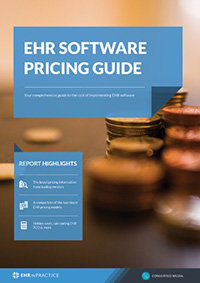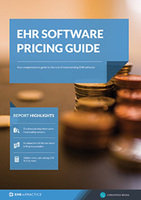How to build the most accurate EHR budget plan possible
Budgeting for an EHR system, over both the long-term and short-term, can be an imprecise art if proper attention is not paid to cost areas beyond the obvious EHR areas such as initial hardware, software, and ongoing maintenance.
All organizations can benefit from examining the total cost benefits of an EHR by accurately modelling budget items that can be difficult to pin down such as long-term human resources costs arising from EHR-related staff training. whether, over the long-term, their EHR will be a complete solution, and accurately modelling HER benefits such as increased productivity and revenue.
1. Factor in the long-term costs of staff training
Training is one of the most overlooked areas involves the human resources costs related to EHR use. As reported in a 2015 article published in Becker’s Hospital Review, discounting the staffing and training costs for EHR solutions presents a trap for organization budgets. The article cites examples of MaineHealth and the University of Arizona Health Network who were forced to add $55 million $32 million respectively to budgeted EHR costs for staff training and support.
As such it is important to consider both short-term and long-term training costs and the impact onboarding new staff due to turnover will have on their training budget. When budgeting for training an organization should consider how often training will be required, where the training will be conducted and who will offer the training to staff. Without an accurate accounting of training costs, an organization could find themselves with significantly more negative budget projection than previously anticipated.
2. Anticipate necessary software updates
An EHR budget should consider completeness - restated, whether the EHR solution will require updates, replacements or third-party add-ons.
One way to overcome any surprises in this area is to think in terms of what functionality the current EHR system has and what an organization will need over the long-term. One should always try to engage their current stakeholders on whether a system will require updates or add-ons to meet their practice’s needs. Or if your practice is shopping for a replacement it is important to ask these questions of potential vendors.
When an organization fails to account for the completeness of an EHR, the organization effectively fails to account for a substantial portion of its EHR budget.
Calculate potential ROI for new software by using our pricing guide to build your EHR budget
3. Use a reliable forecasting method
Organizations can potentially leverage their EHR to realize additional revenue, generated by the efficiencies created from cost savings and quality improvement.
However, one should be aware of the caveat that when incorporating potential revenue and cost savings benefits that stem from EHR use, accurate budgeting requires using a reliable method of modeling these gains. One cannot simply assume that employing an EHR will result in a benefit. In fact, EHR-related increases in productivity and revenue flow depends heavily on many factors.
As such an organization should rely on budget forecasting methods that are able to accurately model these benefits. In some cases, it may require help from a professional able to offer these services.
Accurate budgeting not only places a practice on sound financial footing in the short-term it also eliminates uncertainty over the long-term. For larger organizations, inaccurate EHR budgeting can result in unexpected costs or shortfalls that can exceed millions of dollars.
Free white paper

EHR Pricing Guide
Get your complete guide to EHR software pricing and project costs. Your headstart on EHR pricing research

Featured white papers
Related articles
-

How much EHR costs and how to set your budget
Build a realistic, workable budget for your EHR project with this guide
-

Three factors you should consider when creating an EHR budget
When creating a budget for your EHR project, don't forget to take these 3 things into account.
-

How to set a budget for a small practice EHR
Setting a small practice EHR budget, allocating funds, and hidden costs



